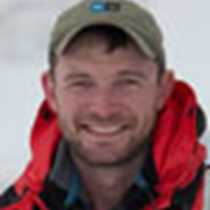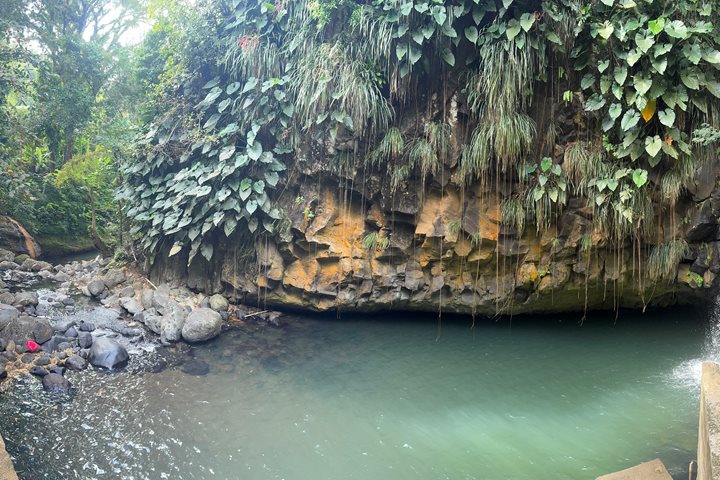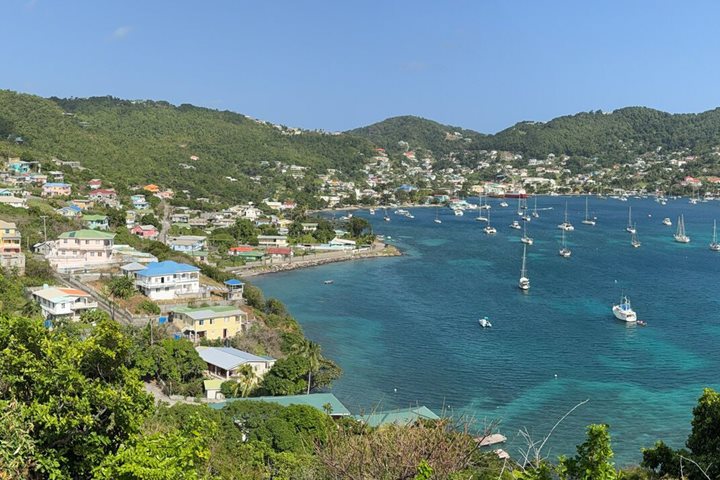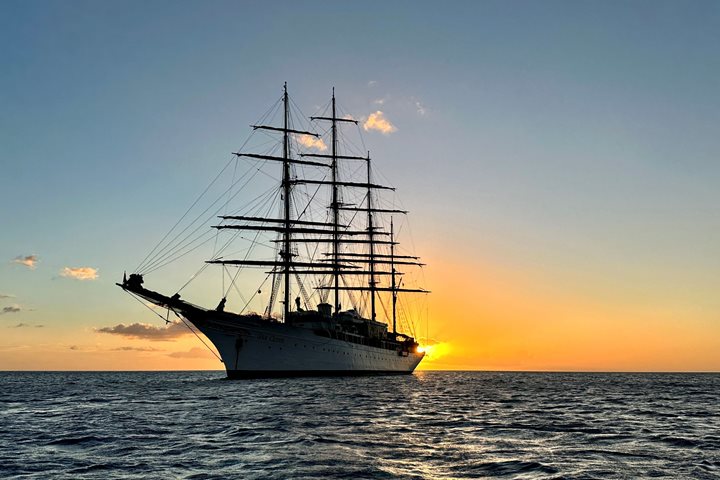The sun rose over Morne Diabolotin at 6:03 a.m. We had a cool northerly breeze of three knots. We dropped anchor in Prince Rupert Bay on the Island of Dominica at 7:09. We could see Fort Shirley off our port and Portsmouth directly off our bow. We boarded tenders for the short ride to the pier at 8:15 and were shortly in the wonderful melee of the market with a great reggae band playing its heart out. We then boarded our vans for the 40-minute ride to Morne Diabolotin at 4775 feet. Our local guide this morning was the well-regarded naturalist Glenn whom I have known for many years. Hurricane Maria has decimated the tree canopy of the rain forest and after six months one can see the efforts of the plants to regrow. We passed breadfruit, mangoes, bananas, pineapples, manioc, yam, coffee, oranges, and grapefruit trees in a wild profusion. Dominica is indeed the “nature island” and during our walk we saw a wealth of tropical trees with colorful creole names. We saw no parrots but did see one of the very shy Zandolin, a local species of salamander. Dominica has the highest concentration of active volcanoes anywhere in the earth—nine active volcanoes in an area slightly less than 300 square miles. The mountainous spine of Dominica sits atop a vast molten lava chamber.
We returned to the Sea Cloud for lunch and at 2:30 Tom Heffernan, our ship’s historian, gave an introductory talk on Dominica and Fort Shirley. The fort was begun in 1774 and fully completed by 1820. It was built almost entirely by slave labor. The fort is strategically situated on Cabrits headland. Designed by the 18th century American architect William Harrison to protect the Royal Navy at anchor in Prince Rupert Bay, the fort never saw action and existed principally as a deterrent to enemies of the English as the canons could sweep the entirety of Prince Rupert Bay. At its zenith the fort had 700 enlisted men and a contingent of the 8th West Indian Regiment made up of slaves. The French forces under Admiral DeBouille took Dominica in September of 1778 only to lose it again in the Treat of Paris of 1783. The fort was abandoned in 1852 and lay derelict and in ruin, covered by strangler figs and the wrath of the jungle until Dr. Lennox Honeychurch undertook restoration beginning in 1982. Lennox is an old friend and has worked tirelessly over the last 30 plus years to restore the fort.
After our visit to the fort we took the small mini-vans to the lovely “Purple Turtle” beach for a well-earned swim. The water was like Goldilocks’ porridge—just right. We enjoyed dinner on the lido deck moored in the splendor of Prince Rupert Bay. After dinner Susan Siebert, our National Geographic photo instructor, gave a talk on National Geographic Traveler magazine.
Off to bed and tomorrow in France at Iles de Saintes.









